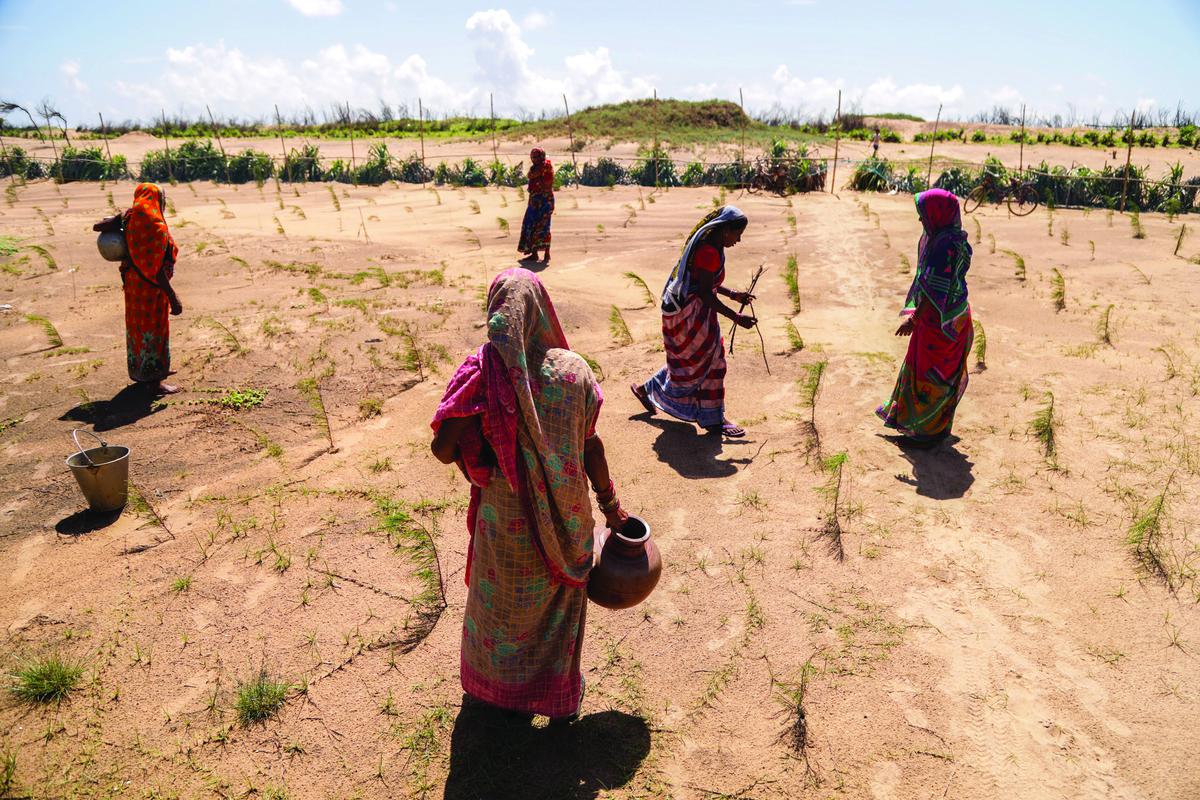
A documentary series of 16 stories of resilience shot in five of India’s most climate-vulnerable States in the run-up to the United Nations Climate Change Conference (COP27)
The Hindu
‘Faces of Climate Resilience’ — a short documentary series of 16 films — pans in on the stories of communities in five States adapting to climate change
Women from 10 self-help groups from Tandahara village in Odisha’s Puri district have been nurturing a forest, which will provide a measure of protection from the water, especially seawater intrusion, that destroys their fields. They planted a forest of casuarina trees along the coastline to prevent coastal erosion as the frequency and intensity of cyclones have been increasing in the area. Elsewhere, at Kalu village in Rajasthan’s Bikaner district, a ‘community facility centre’ helps pastoralists build climate resilience by storing water for cattle in the drought-hit region and in Uttrakhand’s Almora district the women of Kharkiya village help fight forest fires. And closer home, from Kuttanad, there are the stories of people like Thomas Joseph who have built homes on pillars to continue living in a place with the constant, looming fear of flooding.
These are part of a short documentary series Faces of Climate Resilience comprising 16 stories of climate resilience filmed in five of India’s most climate-vulnerable States — Kerala, Maharashtra, Odisha, Rajasthan and Uttarakhand. Each film has been shot in districts that feature the ‘climate risk atlas’ mapped by the Council on Energy Environment and Water (CEEW). The films, produced in association with Edelgive Foundation and Drokpa Films, were commissioned by the not-for-profit policy research institution and will be uploaded on their YouTube channel in the run-up to the United Nations Climate Change Conference (COP 27) scheduled to be held at Sharm El Sheikh, Egypt, from November 6 to 18.
Despite the urgency around climate change, these films are not bleak and without hope. “These shorts ‘humanise’ climate change, bring out the stories of communities building climate resilience and how people are adapting despite the climate challenges, and get these out to people,” says Shawn Sebastian. He directed the three-four minutes short films, filming them over a period of nine months in 2021-2022 travelling the length and breadth of the country, finding and filming the stories.
Although the climate risk map and inputs from CEEW were resources, there were others such as reposted news, local journalists, social workers, and people’s representatives. The stories would have been bleak initially but Shawn says, “We were struck by the resilience of the people. The positive stories of survival and how they have adapted to climate change that has been creeping up on them. People are doing what they can to adapt, within their capacities/limitations. We got to see two sides of the impact of climate change: it was painful.”
The impact of climate change is multi-faceted. Besides the obvious, the impact spills over to lives and livelihoods. For instance at Puri, though families were relocated, traditional livelihoods have been lost. These shorts also offer solutions, suggested by stakeholders who are also the narrators. Besides being heavily researched, each film has been vetted by a panel of scientists.
The films will drop every Friday on CEEW’s YouTube channel.













